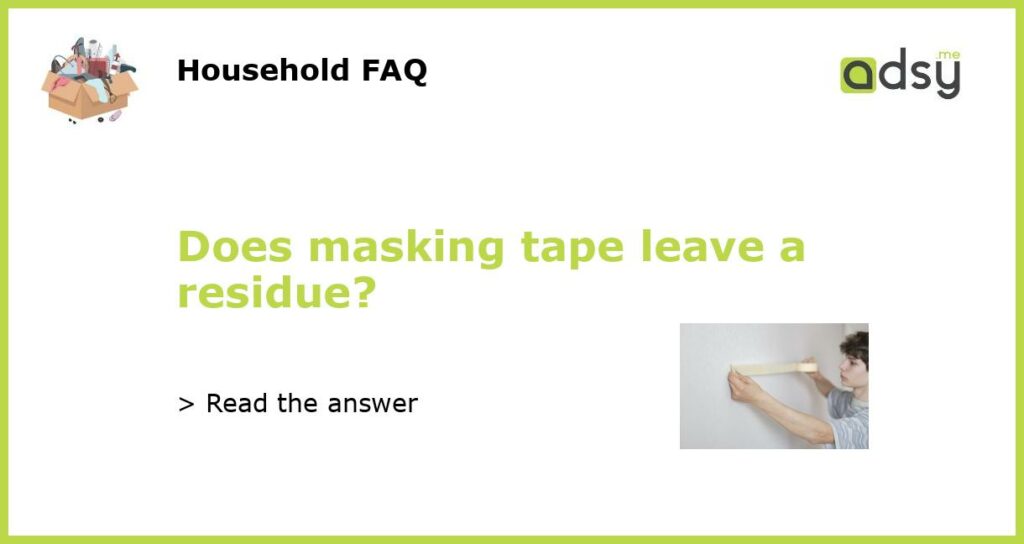Does Masking Tape Leave a Residue?
Understanding Masking Tape
Masking tape is a popular adhesive tape used to protect surfaces, mask off sections for painting or construction, and seal packages. It is known for its easy removability, which is why it is widely used in the painting and construction industry. However, there is a common concern among users, “Does masking tape leave a residue?”
Factors That Affect Adhesive Residue
The answer to the question of whether masking tape leaves a residue is both yes and no. The final outcome depends on various factors like the tape’s quality, the surface it was applied to, and how long it was left on.
Low-Quality Tape Leads to Residue
Low-quality masking tapes are known to leave a sticky residue. The less dense and thin adhesive materials in these tapes stick to surfaces and leave glue behind when removed. The quality of adhesive materials used in making a masking tape determines how much, if any, residue will remain on a surface.
Proper Application Prevents Residue
When used correctly, masking tape is not supposed to leave a residue. A properly applied sheet of tape sticks firmly on the surface but should peel off easily, leaving behind a clean surface. Users need to ensure that they press the tape firmly onto the surface and distribute the pressure evenly. This prevents air pockets that can cause the tape to lift off during the application process.
Removing Residue After Tape Use
If the masking tape has been left on for long or exposed to direct sunlight, an adhesive residue may be left behind. To remove the residue, use a gentle adhesive remover like Goo Gone or rubbing alcohol. Users should scrub the area gently with a soft-bristled brush, especially when cleaning delicate surfaces like a car’s finish or painted walls. However, note that repeated use of an adhesive remover might affect the surface’s original glossy finish.






